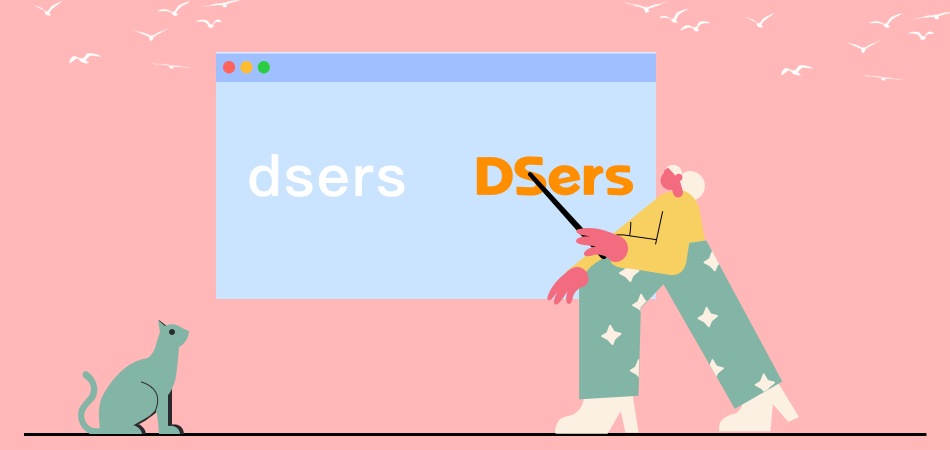What is Visual Identity and How to Grow Your Online Business Brand with It

What you see is what you get when it comes to branding. Potential customers feel the same way. Visually unimpressive brands won't get the benefit of the doubt - building trust is up to them. Brand identity is what you see. The visible elements of your brand create an impression and shape perception. Considering that images do not communicate with words, they are a powerful form of communication.
As a result, they are more persuasive because they speak on an emotional level. The power of communication comes with great responsibility, and you'll want to make sure you're not sending the wrong message.
To make sure your visuals are delivering the right message, we have compiled this guide to everything about visual identity. By the end, you will be ready to create one that will engage your customers.
What is Visual Identity
An organization's visual identity is the imagery and graphical information that tells the world who it is and sets it apart from its competitors. A brand is everything a customer can see, from the logo to the interior design of a store.
Visual identity ends with the creation of a brand style guide that specifies how the brand should be visually represented at all times and under all circumstances.
Visual identity has the following purposes:
- Create an emotional impact on viewers
- Describe the nature of the brand and products/services offered
- Through consistent visuals, to connect the many aspects of a business
What are the Characteristics of a Great Visual Identity
Visual identities aren't just pretty; they're functional, helping you tell your brand's story no matter what medium. Specifically, they are:
- Distinctive: You can't miss it among the crowd. Look at Nike or Apple, for example.
- Memorable: Leaves a lasting impression.
- Easy to scale: Whether you are branching out into new products, services, or industries, your brand should be able to grow with you. Remember that you aren't just designing for today as you go through the process. Your brand will benefit from your design.
- Flexibility: It can be used in a variety of mediums, such as web, print, etc.
- Cohesive: Everything is in harmony. Therefore, your content remains consistent.
- Easily applied: It needs to be easy to use so that your brand designers (and any content creators) have the tools they need to do their jobs.
What Determines a Brand's Visual Identity
The visual identity of your organization consists of the visible images associated with it. These are the elements that shape how your clients and customers perceive your brand. Among them are:
- Colors
- Logo
- Typography
- Writing Styles
- Styles of imagery

Visual brand identity is made up of more than just visible characteristics. An overall theme and message are underlying the visuals. Your branding is based on these elements.
It's important to match the visual identity of your brand with the overall identity of the company.
A Guide to Creating Your Brand's Identity
Are you unsure of what we are talking about? Not sure where to start when it comes to creating your own visual brand identity? We have exactly what you need to learn about branding yourself well online, and how to do it.
1. Prepare the Groundwork
While the external components are the end goal, they cannot be achieved without first laying a solid foundation. A brand's foundation is built from within.
- Who are you, exactly?
- What are your values, what do you stand for?
- What do you want your current and prospective customers to know about you?
- How are you different from your competitors?
The visual aspects of your brand identity are much easier to develop when you know these things. Create visual components.
To create your visual identity, you need to determine the intrinsic characteristics of your brand. This visual element acts as the exterior of a house, while the intangible elements serve as a foundation.
2. Icons and Logos
Logos are symbols or designs that identify or represent your business. Although this is imperative when it comes to merchandise, signage, or physical products, it is even more important when it comes to your online presence where you have such an insignificant image to help people identify your brand.

Whether you choose an animal, an icon, a monogram, or anything else, your logo needs to be clear, easily recognizable, and clear as to how it relates to your brand.
3. Scheme of Colors
There is an emotional appeal to colors. In the world of economics, red is associated with negative income. That is why you rarely see finance companies with red logos or designs.
A more common color used for branding financial companies is green or black (both associated with positive income).
The colors you use in your branding should evoke a certain emotion in your audience. Is it confidence? Is it trust? Is it hope? Utilize colors that evoke that emotional response in your website, logo, and any images you create.
4. Fonts
As far as fonts go, less is almost always more. Sure, there are a lot of options out there, and it would be tempting to try incorporating them into your branding and website.

However, this could be very distracting to prospects. Keep things simple and clean by choosing only one or two fonts and sticking with them. Your audience will remain focused on your content, which is exactly what you want.
5. Don't just Focus on Social Media
From the photo on the postcard you ship with orders to the photo in an advertisement, every point of contact a customer has with your business can influence how they perceive you. Each of these visual components needs to be carefully considered and integrated.
6. White Space
When you consider the visual elements that contribute to your brand identity, white space probably isn't one of the first things that come to mind. The truth is, it plays just as much of a role in helping your brand stand out online as any of the other things we've discussed.

By using white space on your website or in your branding, you reduce the chances of visitors feeling overwhelmed. It also directs their attention precisely where you want it: to your name, your call-to-action (CTA), or your landing page.
Make sure you leave space for white space as you think about the different components that form your brand.
7. Visuals Shouldn't Come before the Brand
An effective visual brand takes time to develop. You will eventually find a formula that works for you if you are willing to experiment and learn what your customers respond to.
| Get Started Now to Grow Your Online Business with the Best AliExpress Dropshipping Tool - DSers! |
Make sure you understand your brand and customers before choosing photos or designs that you like. By doing so, you can choose visual elements that will help you connect with the right customers.
8. Tell an Engaging Story
The purpose of graphic design is to communicate ideas visually, but this does not mean that the ideas themselves tell a compelling story about your brand. The power of visuals is to grab attention, but the power of stories is to engage people. The underdog gets a cheer, the villain gets scorn, and the hero gets a swoon.
9. Establish a Style Guide
Establishing the internal foundation of your brand and solidifying the external components of your visual identity is the first step in creating a style guide. With this document, you can ensure that your brand remains consistent and recognizable - deviations or exaggerations are not permitted.
Your team members who create something online that is part of your visual brand know exactly what it should look and feel like. Your brand's style guide will specify the exact colors you're using, the acceptable sizes and ratios for your logo, as well as two or three fonts you're allowed to use.
By doing this, there's never a brand image out there that is out of sync or not aligned with the visual identity you're trying to convey.
10. Distribute
Now that you've put all that work into your visual identity, it's time to share it with the world. You can display your branding in these places.
· Website: Your website should be completely updated with your newest branding, which is probably a no-brainer.
· Social media: Make sure your social media accounts have updated profile images, and make sure images and videos you share online follow your style guide.

· Email: There are a few layers to this one. Ensure that your email picture and signature reflect your brand, and make sure any emails you send follow the guidelines you've created.
· White pages and content offer: Make sure you use only your accepted fonts and colors when you're designing new content offers and updating old ones. That way, everything you share is consistent with your brand.
· Branding and merchandise in the physical world: Our focus tends to be on the digital aspects of your branding, but you can't neglect the physical components.
Visual Identity vs. Brand Identity
The relationship between visual identity and brand identity is intrinsic. Brand identity is, on the one hand, a comprehensive reflection of everything that makes a brand what it is.
A brand's visual identity is comprised of non-visual elements like its brand voice, copy-editing guidelines, mission statement, and core values.
As a separate discipline, visual identity requires a different method of thinking and approach from brand identity in general. Though there is some overlap, each profession requires a different approach.
Marketers are responsible for brand identity, while designers and creative directors are in charge of visual identity. Visual identity expresses who a brand is on the outside, whereas brand identity describes the brand on the inside.
Final Words
Your visual identity sets you apart from your competitors and tells your customers who you are and what they can expect from working with you. For your business to be perceived favorably, you must nail your visual identity and create designs that reflect your brand accurately.
Your visual identity needs to be carefully crafted. You want people to understand who you are when they see your name and logo. If you want to nail your visual identity, you might have to make some changes or even rebrand your business.
To connect with customers, a brand's visual identity is a powerful tool. Due to its effectiveness as a communication tool, the wrong message can have disastrous effects. It is important to understand your brand identity to guide your visual journey. However, if you want to ensure a visual identity that fits, you should work with a logo designer.













 Company
Company
 Why Choose DSers
Why Choose DSers
 Blog
Blog
 Help Center
Help Center



